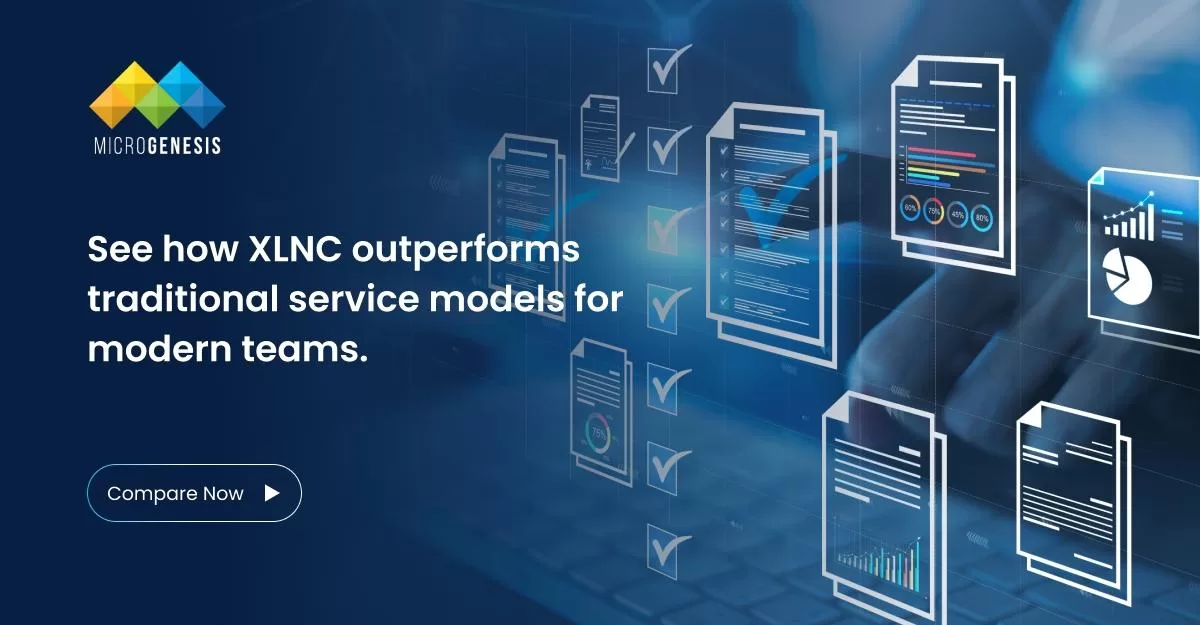Service Level Agreements (SLAs) can be challenging to measure, report on, and adhere to, yet they play a crucial role in gauging performance against objectives and improving customer satisfaction. In the realm of service providers, an SLA is a straightforward agreement between the provider and the customer, whether internal or external. It outlines the services to be delivered, expected responsiveness, and the metrics for measuring performance.
What is SLA?
SLA stands for Service Level Agreement. It is a formal, documented agreement between a service provider and a customer—whether internal or external—that outlines the expected level of service. SLAs define the scope, quality, and responsibilities of the service being provided and establish clear metrics for measuring performance.
Key Aspects of SLAs:
- Defining Service Expectations: SLAs contractually define agreed-upon terms, covering aspects like uptime and support responsiveness. For instance, commitments to 99.9% service uptime or a support response within 24 hours.
- Building Trust through Formalization: SLAs are foundational in building trust between IT teams and customers. They establish clear expectations and provide a framework for addressing breaches.
- Strengthening Relationships: SLAs ease concerns over risks, enhancing trust between parties. By specifying breach consequences, they reduce uncertainty and strengthen the IT-customer relationship.
- Formalizing Communication: SLAs enable structured conversations based on agreed-upon terms, facilitating effective communication about IT issues with stakeholders.
- Improving Productivity and Morale: By defining the urgency of incoming requests, SLAs help IT teams prioritize and focus on critical issues, improving overall productivity.
Types of Service Level Agreements (SLAs)
The three basic types of Service Level Agreements (SLAs) are:
Customer Service-Level Agreement:
- This type of SLA is between a service provider and its external customers, also known as an external service agreement.
- It involves a negotiation between the customer and the service provider to define the specific services to be provided.
- Key components of a customer-based SLA include detailed service expectations, service availability provisions, standards for each service level, responsibilities of each party, escalation procedures, and terms for cancellation.
Internal Service-Level Agreement:
- An internal SLA is between an organization and its internal customers, which could be another department, organization, or site within the same company.
- It enables different parts of an organization to establish clear expectations and agreements for services provided internally.
- For example, there could be an SLA between the marketing and sales departments, outlining expectations for lead generation and delivery.
Multilevel Service-Level Agreement:
- A multilevel SLA divides the agreement into various levels that are specific to different groups of customers or different service offerings.
- It is often used when a service provider offers different service levels based on customer needs or offers different tiers of services at varying price points.
- For instance, a Software-as-a-Service (SaaS) provider might have basic services for all customers but will offer different service levels depending on the subscription package purchased.
These three types of SLAs cater to different scenarios and help establish clear expectations, responsibilities, and standards for service delivery, whether it’s for external customers, internal departments, or various customer segments.
Dig Deeper: Why it’s smart to work with an Atlassian Partner while implementing Atlassian Solutions
Distinguishing Between SLAs and KPIs:
An SLA is a forward-looking agreement outlining the relationship between the service provider and the customer. Key Performance Indicators (KPIs) are metrics chosen to assess how well a team meets agreed standards. While SLAs set the terms for future collaboration, KPIs measure specific performance metrics against these agreements.
Challenges with SLAs:
Despite their importance, IT teams encounter challenges in implementing SLAs effectively:
- Difficulty in Tracking and Changing SLAs: Tracking SLAs can be intricate, requiring extensive data extraction and custom reporting. Changing them often involves significant development efforts.
- Misalignment with Business Priorities: SLAs may not evolve at the same pace as business needs, often being inherited without reflecting current priorities.
- Limited Flexibility in Reporting: Standard SLA reports often lack the flexibility to account for unique circumstances influencing SLA attainment, hindering continuous improvement efforts.
Setting and Measuring SLAs:
To ensure relevance and alignment with business objectives, regularly revisit and update SLAs:
- Set a Baseline: Evaluate current SLAs and performance against them, aligning services with business goals.
- Seek Customer Feedback: Directly engage with customers to gather constructive feedback on service quality and identify areas for improvement.
- Draft New SLAs: Based on feedback and business goals, create updated SLAs that align with current needs, removing unnecessary services and adding value.
- Gain Management Support: Secure support from IT and customer leadership to ensure successful implementation of SLAs.
How to validate SLA levels
Validating Service Level Agreement (SLA) levels is crucial to ensuring that the agreed-upon standards and expectations are being met. Here are steps to validate SLA levels effectively:
Define Measurable Metrics:
- Clearly define the measurable metrics outlined in the SLA. This may include response times, resolution times, uptime percentages, and other relevant performance indicators.
Implement Monitoring Systems:
- Utilize monitoring systems and tools to track and measure the defined metrics. This could involve implementing performance monitoring software, network monitoring tools, or other relevant technologies.
Regular Performance Reporting:
- Generate regular performance reports based on the defined SLA metrics. These reports should provide insights into how well the service provider is meeting the agreed-upon service levels.
Automated Alerts for Breaches:
- Set up automated alerts to notify relevant parties in the event of SLA breaches. Automated alerts ensure that deviations from agreed-upon levels are promptly identified and addressed.
Periodic Review Meetings:
- Schedule periodic review meetings between the service provider and the customer to discuss SLA performance. These meetings provide an opportunity to review performance reports, address concerns, and make any necessary adjustments to the SLA.
Customer Feedback:
- Gather feedback from customers regarding their perception of service levels. Customer input can provide valuable insights into the actual user experience and whether the SLA levels are meeting their expectations.
Conduct Audits:
- Periodically conduct audits of the service delivery process to ensure compliance with SLA requirements. Audits can help identify any gaps or areas for improvement in meeting service levels.
Benchmarking Against Industry Standards:
- Benchmark the SLA levels against industry standards. This can help determine if the agreed-upon service levels are in line with what is considered standard or best practice in the industry.
Utilize Key Performance Indicators (KPIs):
- Define and monitor Key Performance Indicators (KPIs) that align with the SLA objectives. KPIs provide a more granular view of performance and help in identifying specific areas that may need improvement.
Continuous Improvement Initiatives:
- Implement continuous improvement initiatives based on the insights gained from performance monitoring. SLAs should not be static; they should be subject to refinement based on changing business needs and evolving service requirements.
Documentation and Records:
- Maintain thorough documentation and records of SLA performance. This documentation serves as a reference point during reviews, audits, and discussions about service levels.
By following these steps, organizations can effectively validate SLA levels, ensuring that the agreed-upon standards are consistently met and identifying opportunities for enhancement and optimization in service delivery.
Also Read: Atlassian Partner Benefits for Small & Medium-sized Businesses
Best Practices for Effective SLAs:
- Stop Tracking Time to Resolution During Customer Waiting Periods: Ensure accurate measurement by accounting for slow-responding customers and third-party escalations.
- Prioritize Agent Experience: Use clear naming conventions and avoid creating excessive goals for better agent understanding and adherence.
- Break Up Large SLAs: Instead of complex SLAs, use a series of smaller ones to measure and report on individual workflow components.
- Set Different Goals Based on Ticket Priority Levels: Tailor performance goals to ticket priority, acknowledging that not all issues have the same level of urgency.
- Configure SLAs for Different Hours: Differentiate SLAs based on service hours, allowing flexibility for services that require 24/7 support and those restricted to business hours.
Implementing these best practices ensures that SLAs not only meet the needs of the business but also contribute to improved service quality and customer satisfaction.
As a trusted Atlassian Platinum Solution Partner, MicroGenesis excels in leveraging its expertise to assist organizations in the seamless implementation of Service Level Agreements (SLAs) within the Atlassian ecosystem. Our tailored solutions are designed to enhance service delivery, foster accountability, and elevate customer satisfaction.
In partnering with MicroGenesis, organizations benefit from a collaborative and knowledgeable team dedicated to maximizing the potential of the Atlassian suite, specifically tailored to meet SLA requirements and elevate service management capabilities.




